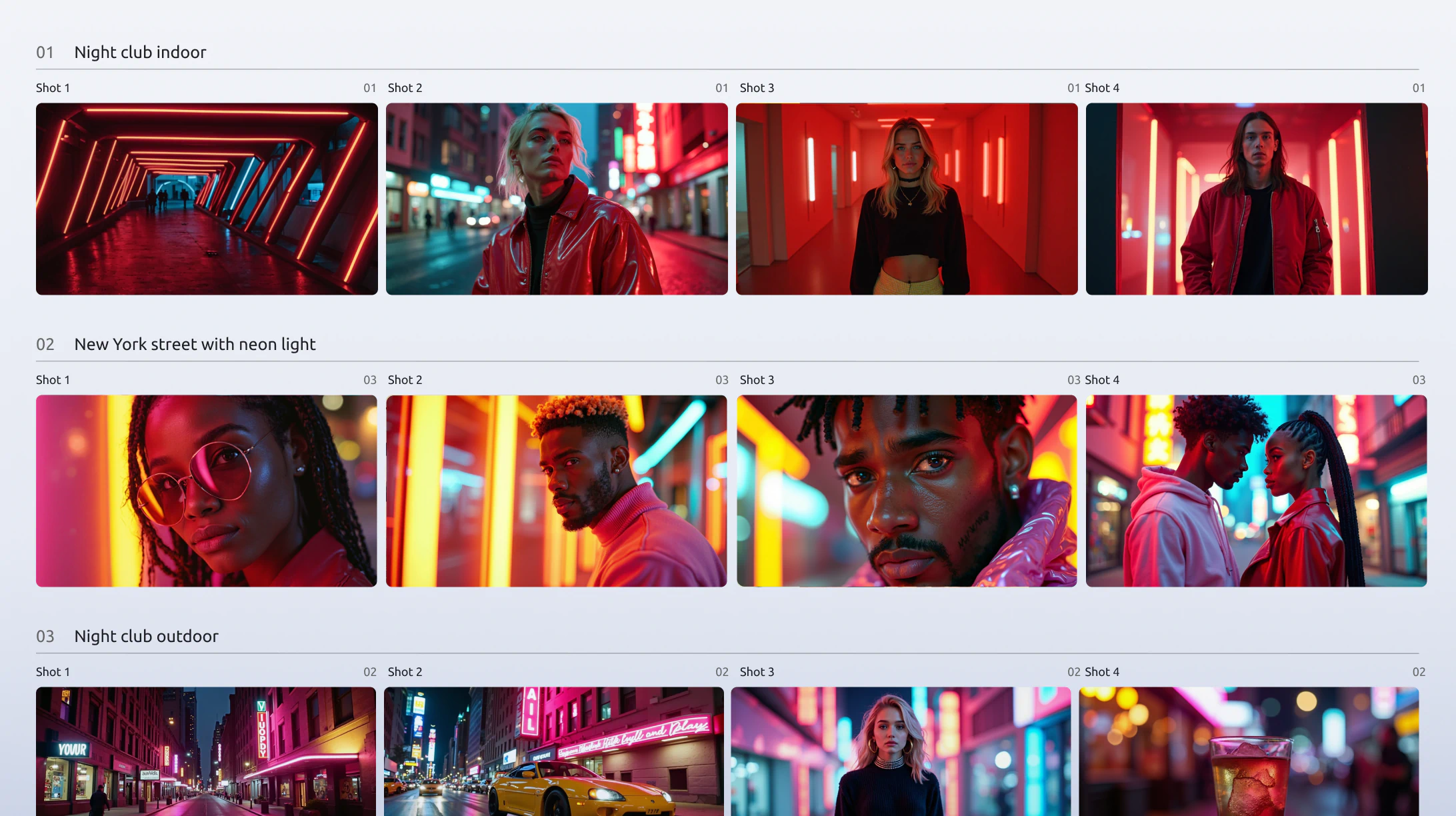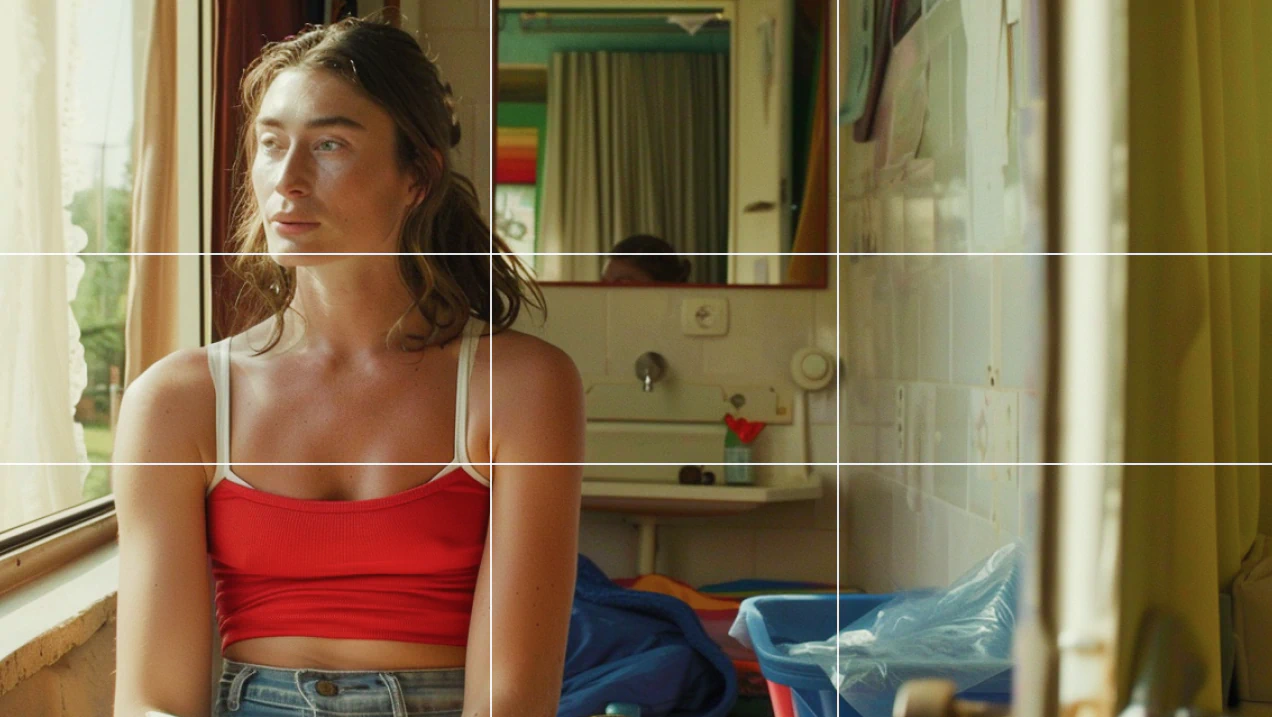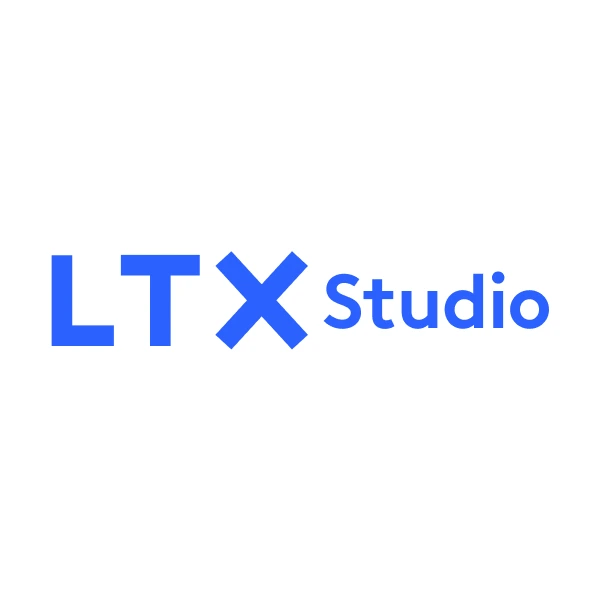From Hitchcock’s shot planning to Pixar’s frame-by-frame animation, storyboards have been the secret weapon of great filmmakers for nearly a century.
This visual planning tool turns abstract ideas into concrete visual plans before a single frame is shot.
What makes storyboards essential for modern filmmaking and how can AI tools like LTX change the storyboarding process?
Let’s explore the visual language that bridges script and screen.
{{blog-banner-video01}}
What is a Storyboard?
A storyboard is a visual representation of a film or video project that sequences key scenes through illustrated panels.
Each panel shows what the camera will see, how characters are positioned and how the story unfolds shot by shot. Storyboards are the visual blueprint that guides every department from cinematography to production design.
Storyboards matter because they solve problems before expensive production begins.
They reveal pacing issues, identify missing shots and ensure everyone has the same creative vision. Great storyboards save time and money by making abstract concepts tangible and testable before cameras roll.

Storyboard Definition
The storyboard definition in filmmaking means a sequence of drawings or images that represent planned shots in a film, commercial or video project.
Understanding what storyboards are reveals they’re more than just sketches. They’re communication tools that convey camera angles, character positions, movement and transitions.
A storyboard meaning goes beyond just pictures. Each panel usually includes notes about dialogue, camera movement, lighting and timing.
This storyboard explanation shows how the tool is a shared reference point that aligns directors, cinematographers, editors and production teams around a unified vision.
Film storyboard history goes back to the Disney studios in the 1930s. Animators needed a way to visualise entire sequences before the laborious animation process began.
Live-action filmmaking soon followed. Directors like Alfred Hitchcock became famous for their detailed storyboards that pre-visualised every shot.
Storyboard Examples
Iconic storyboard examples show the tool’s power across different media and production scales.
Star Wars has detailed storyboards that helped George Lucas communicate complex space battles and special effects sequences before the technology existed to create them. The visual plans became the roadmap for groundbreaking visual effects work.
Psycho’s shower scene is one of cinema’s most famous storyboarded sequences. Hitchcock’s detailed panels broke down the shocking moment into precise cuts and angles.
The storyboard was the blueprint for one of film’s most influential sequences.Modern storyboarding examples range from big-budget features to YouTube content.
Marvel films use extensive storyboards to coordinate massive action sequences across multiple units. Independent filmmakers use storyboards to maximise limited shooting days. Commercial directors use them to pitch concepts and ensure client alignment before production.
Storyboard Template
A storyboard template provides the structure for efficient visual planning. Traditional storyboard templates have panels with space for drawings plus fields for shot number, scene description, dialogue and technical notes. The standardised format ensures nothing gets missed during planning.
Digital storyboard templates offer more flexibility with layers for camera movement arrows, aspect ratio guides and colour coding for different scenes or sequences.
Professional templates match industry standards so storyboards communicate clearly across production teams.
How to storyboard depends on the project. Feature films require detailed panels for every shot. Commercials focus on key moments and transitions.
Animation needs frame-by-frame precision. The template structure adapts to serve each format while maintaining core organisational principles.
Storyboard in Film
Storyboard in film serves multiple purposes throughout the production process. During pre-production, storyboards help directors visualise sequences and make creative decisions before logistical constraints apply.
They’re essential for location scouting and identifying what specific spaces need to accommodate.
For cinematographers, film storyboards communicate framing, composition and lighting approaches.
Production designers use them to understand what set elements will be visible in each shot. Editors reference storyboards to understand intended pacing and transitions even before footage exists.
Storyboarding in film also serves practical purposes. Complex action sequences, visual effects shots and coordinated stunts require detailed visual planning. Storyboards become the communication tool that synchronises dozens of departments working towards a unified creative vision.
Create Storyboards with LTX
LTX Studio revolutionises storyboard creation by automating the time-consuming illustration process. The platform’s AI storyboard generator turns written scripts and scene descriptions into visual storyboard panels instantly. No drawing skills required.
Enter your script or scene descriptions and the AI generates storyboard frames that match your vision. Specify camera angles, character positions and environmental details through simple prompts. The system creates consistent characters across panels using Pro Actors technology, maintaining visual continuity throughout sequences.
The platform allows rapid iteration and experimentation. Test different visual approaches by generating multiple storyboard versions.
Preview how scenes connect and flow before committing to production decisions. Make changes instantly without redrawing entire sequences.LTX Studio storyboards integrate with the full production workflow.
Once your storyboard is complete, use the same panels as the foundation for video generation with LTX-2 and VEO models. The storyboard becomes the visual DNA that carries through from planning to final output.
This makes professional storyboarding accessible to everyone.
Independent creators and established production companies can do detailed visual planning without hiring storyboard artists or spending weeks on pre-visualization. Focus on creative decisions not technical execution.

Conclusion
Storyboards are the visual language that turns scripts into screen reality. They solve creative problems before production begins and ensure everyone is on the same page. From Hitchcock’s detailed panels to modern digital workflows, storyboards are the tool for filmmakers who want to plan and execute.
With LTX Studio, creators at every level can get professional storyboarding through AI-powered tools that remove the barriers.
Whether you’re planning a feature film or a social media video, modern tools make detailed visual planning available to all storytellers and opens up new possibilities for production confidence.
Heading
November 4, 2025
















.png)







